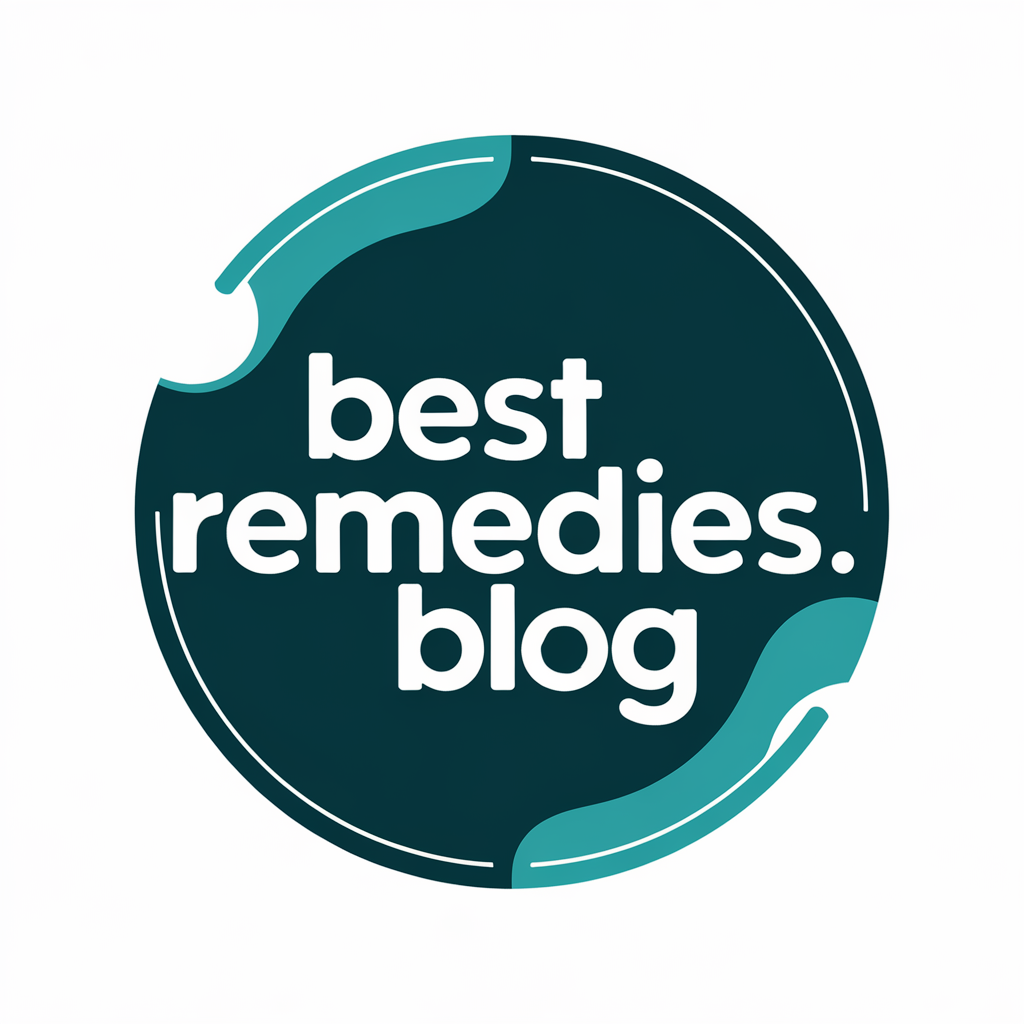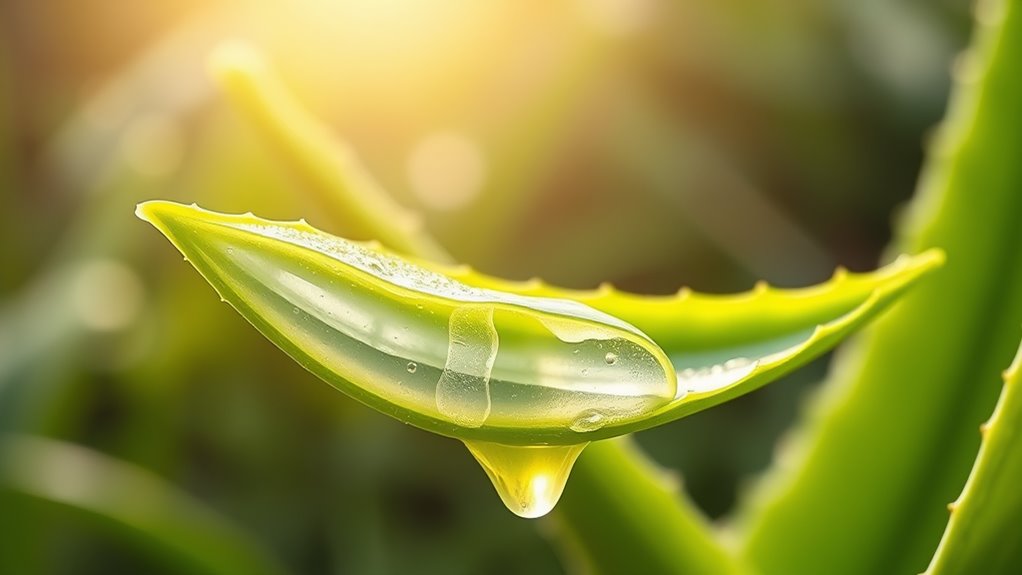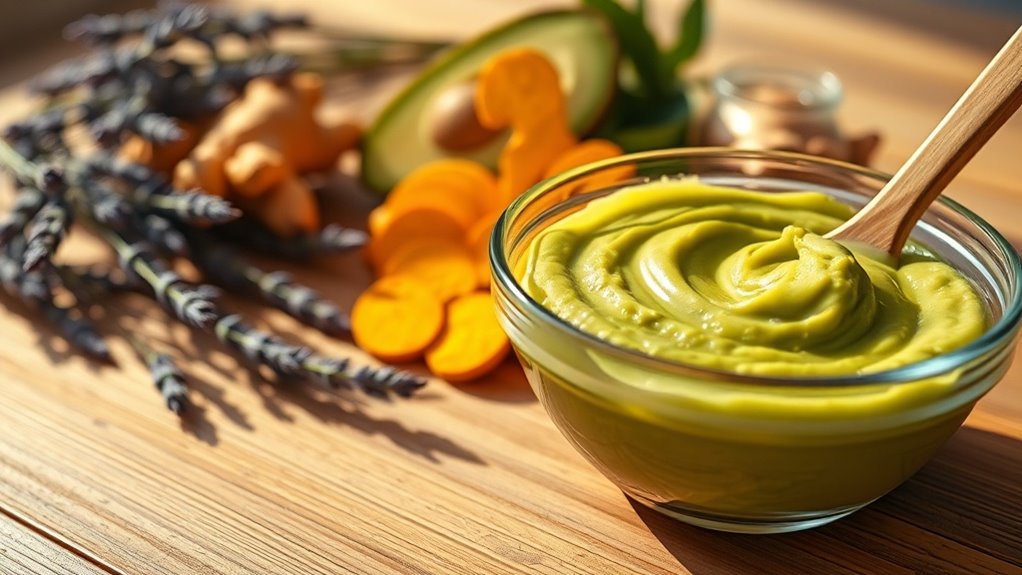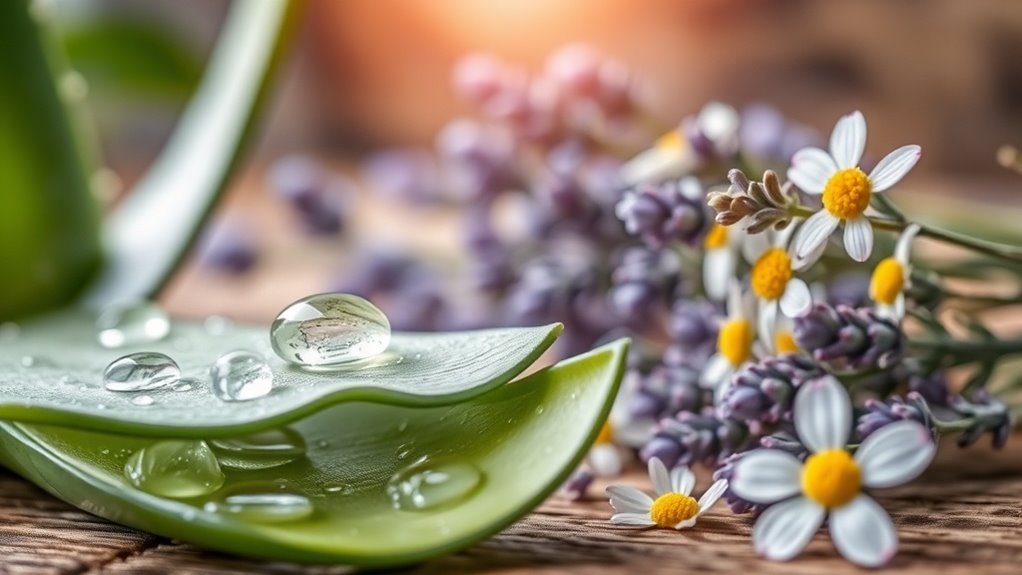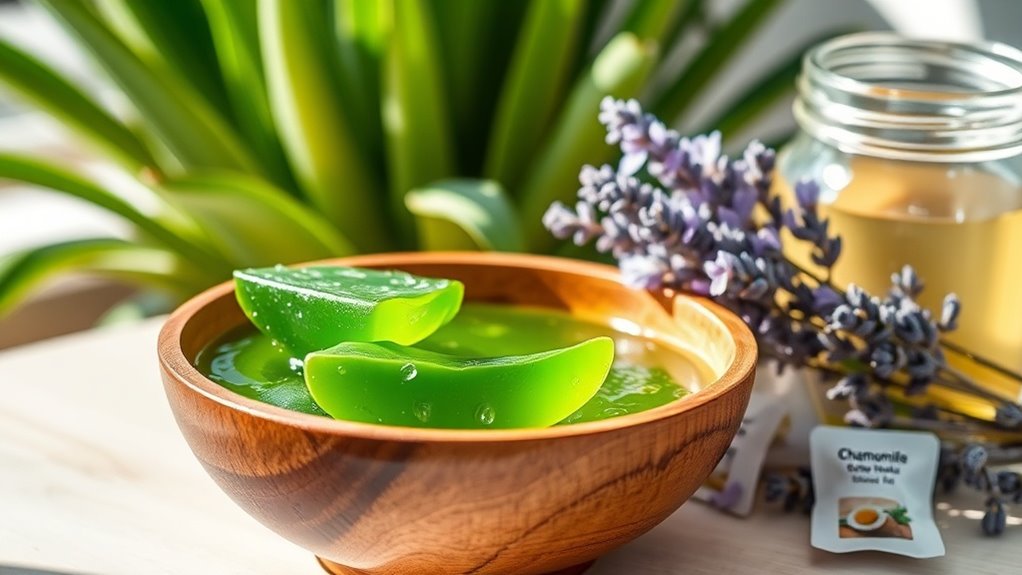| Step | Procedure | Expected Outcome |
|---|---|---|
| 1 | Patch test on wrist | No redness or swelling |
| 2 | Initial application | Reduced itching within hours |
| 3 | Daily use for three days | Noticeable rash calming |
| 4 | Full evaluation | Complete resolution or stop |
This structured testing minimizes risks and verifies effectiveness practically.
Key Ingredients for Relief
To effectively address a rash’s irritation, key ingredients such as aloe vera and colloidal oatmeal offer proven relief.
You’ll benefit from their science-backed properties, which target inflammation and support skin barrier function without synthetic additives.
- Aloe vera: Its gel contains enzymes and polysaccharides that actively reduce swelling and hydrate your skin, accelerating cellular repair.
- Colloidal oatmeal: This finely ground oat form creates a protective layer on your epidermis, effectively binding moisture and neutralizing irritants.
- Chamomile extract: Rich in flavonoids, it provides potent antioxidant action, helping to stabilize your skin’s defenses against oxidative stress.
For enhanced results, many find that pairing these ingredients with a common kitchen ingredient can provide quicker relief, as explored in related natural remedies.
Step-by-Step Application
To manage your rash effectively, you start by preparing the ingredients carefully, ensuring they’re clean and measured for optimal safety.
Next, you apply the treatment directly to the affected area, using gentle, even strokes to promote absorption.
This straightforward process helps you achieve quick, reliable relief while minimizing irritation. Additionally, incorporating coconut oil can further nourish and soothe the irritated skin due to its natural properties.
Prepare Ingredients
Before you prepare the ingredients for applying a rash treatment, gather these essentials: fresh aloe vera gel, colloidal oatmeal, and a gentle carrier oil like coconut.
You’ll need to select high-quality items to maximize efficacy.
Extract gel from a mature aloe leaf for its potent anti-inflammatory compounds, grind oatmeal into a fine powder for better absorption, and warm the oil slightly for easier mixing.
- Verify aloe vera’s freshness: Check for clear gel without discoloration to ensure it’s rich in aloin for rapid soothing.
- Process colloidal oatmeal: Use a blender to achieve a consistent texture, enhancing its barrier-repair properties.
- Select carrier oil wisely: Opt for unrefined coconut oil, which provides natural emollients without synthetic irritants.
Apply Treatment
Now, apply the prepared treatment directly to the affected area, ensuring even coverage for optimal relief. Always perform a patch test on a small area first to check for allergies.
Begin by cleansing the skin with mild soap and water to remove debris. Pat dry with a clean towel.
Using a cotton ball or clean fingertips, spread a thin layer evenly over the rash. Let it absorb for 5-10 minutes.
For widespread areas, apply systematically from center outward.
Reapply every 4-6 hours, but stop if irritation increases.
Consult a professional if symptoms persist.
Immediate Results I Noticed
I noticed a marked decrease in itching and redness within the first few minutes after applying the treatment, offering quick relief from discomfort.
